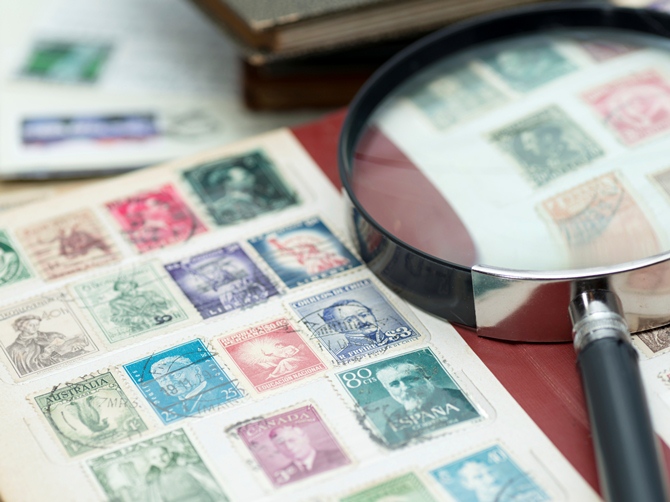King of Hobbies
"Stamp collection is often called the hobby of kings or the king of hobbies, despite its short history of just over a century," said Anna, an avid stamp collector for 30 years, who took after the hobby after her father while in the United States. And the reason for the short history of stamp collection is that the history of postage stamp itself is short, with the first stamp introduced in the United Kingdom not until 1840 as part of postal reforms promoted by Sir Rowland Hill, who the modern-day world has to thank for safe, speedy and cheap transfer of letters. The first postage stamp in the United States, interestingly, didn't come until 1847, while Hong Kong, then a British colony, saw its first official stamp in 1862, three years earlier than China. "It's precisely its short yet fascinating history that stamp collection appeals to me," said Anna.
"Generally, people would collect stamps issued by their own countries because philately is about the study of stamps by drawing on one's historical knowledge. I, for instance, am interested in stamps related to Shanghai, where my root is. There are exceptions, of course – China's stamps before 1945 were mostly collected by foreigners because not only were the Chinese not familiar with the notion of stamp collection, they were also not so affluent to live in and post from overseas countries. Apart from countries, some people would also create themes for their collection, such as butterfly, postal history, stamps issued in particular eras, and the history of food."
Small Size, Plentiful Information
As Anna would agree, serious stamps collectors are not unlike detectives, as a postage stamp carries oodles of information. "Back in the days when letters were shipped to various points before they reached their final destinations, the postmarks marking the postal route tell whether the letters were transported by land or sea, and you can deduce the weather condition from there (when weather didn't permit the transportation by sea, for instance). With a letter that took 40 days instead of 12 days to deliver, for example, you may contemplate the reasons for the delay: could there have been wars? "
"There are a lot of things to be explored in a postage stamp (attached to an envelope), and that is why it's common to see stamp collectors spending hours on end studying the stamps – it is a continuous quest for knowledge, where you need to find out why a certain denomination or amount of stamps were used to post a particular letter, why was a particular route taken, which ships did the letters travel on before World War Two and many more," continued Anna. "Stamp collection is, by all means, a great hobby for senior citizens too, as it requires infinite patience and concentration. You'll notice that genuinely passionate stamp collectors would never drink or eat while they study stamps, because the slightest splash of water or bits of food could ruin the stamps. Likewise, you don't see many smokers among stamp collectors, because the smoke could stain the stamps."
What It Takes to be a Stamp Collector
With its delicate nature, stamps need to be handled and stored with extra care. "You'll need a good pair of stamp tongs for handling and stamp mounts for cataloging. Be sure to avoid humid places for storage, and it's a good idea to wrap your catalogue with newspaper to prevent bugs bite too. Put your catalogues upright instead of in piles so that the stamps won't be pressed. While reference books are very helpful in preparing you for stamp collection, in-depth cultural and historical knowledge is crucial for stamp collection – the more you know about historical events, the better you can untwine the clues in the stamps."
Stamp Investment
And the ability to untwine the clues in the stamps is important when it comes to investing in stamps. "You must first be a stamp collector or a stamp lover to be a stamp investor, because the value of a stamp lies in its history," said Anna. "You'll need to be able to distinguish between rare stamps and ordinary stamps, as rare stamps are the ones that are worth most."
While stamp investment comes with its own kinds of risks, such as the preservation and storage of stamps, it is comparatively a safer kind of investment. "Stamp investment is a long-term investment, meaning you won't expect drastic rise and drop of a stamp's price. The other advantage of stamp investment is that rare stamps never depreciate in value, as long as they are well-preserved."
But as Anna advised, stamp investment requires circumspection and insider knowledge, so be sure to fathom your love of stamps before hopping on the stamp investment bandwagon!
Special Thanks:
Anna Lee, Vice President of Hong Kong Philatelic Society
